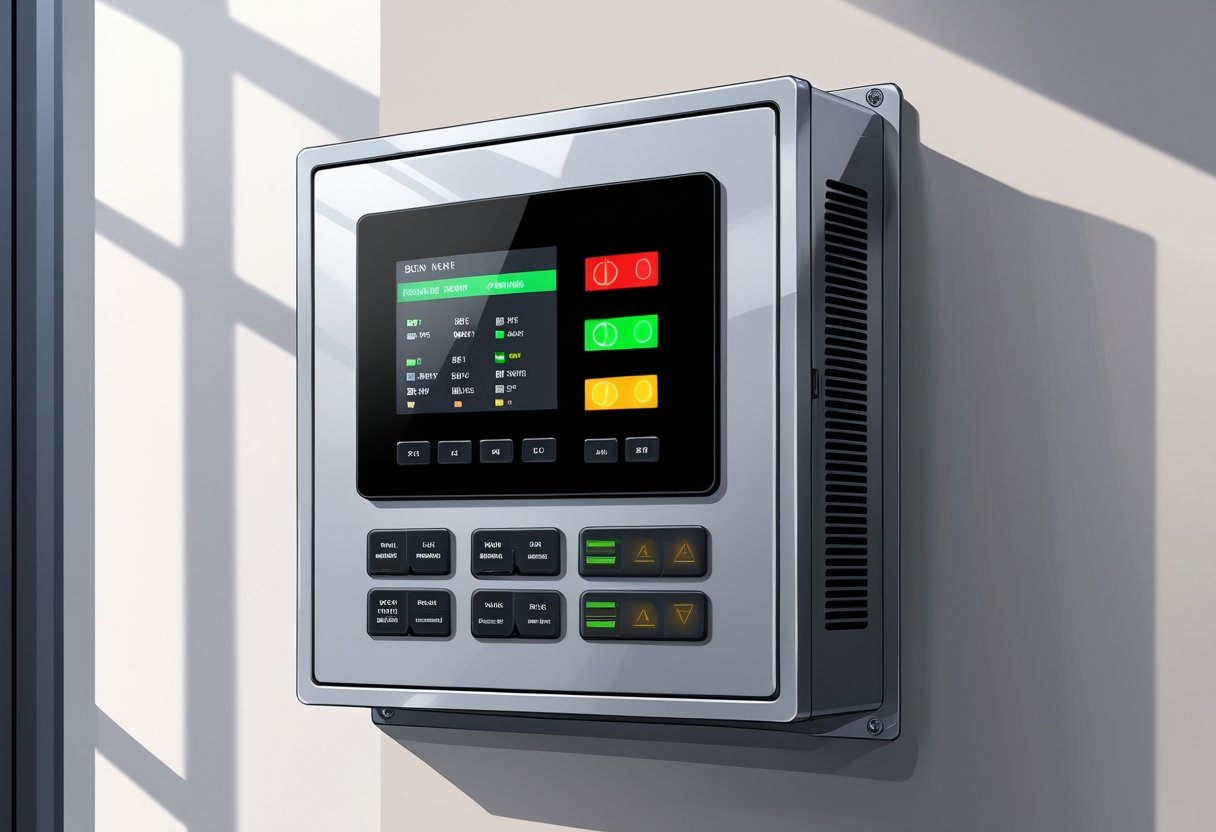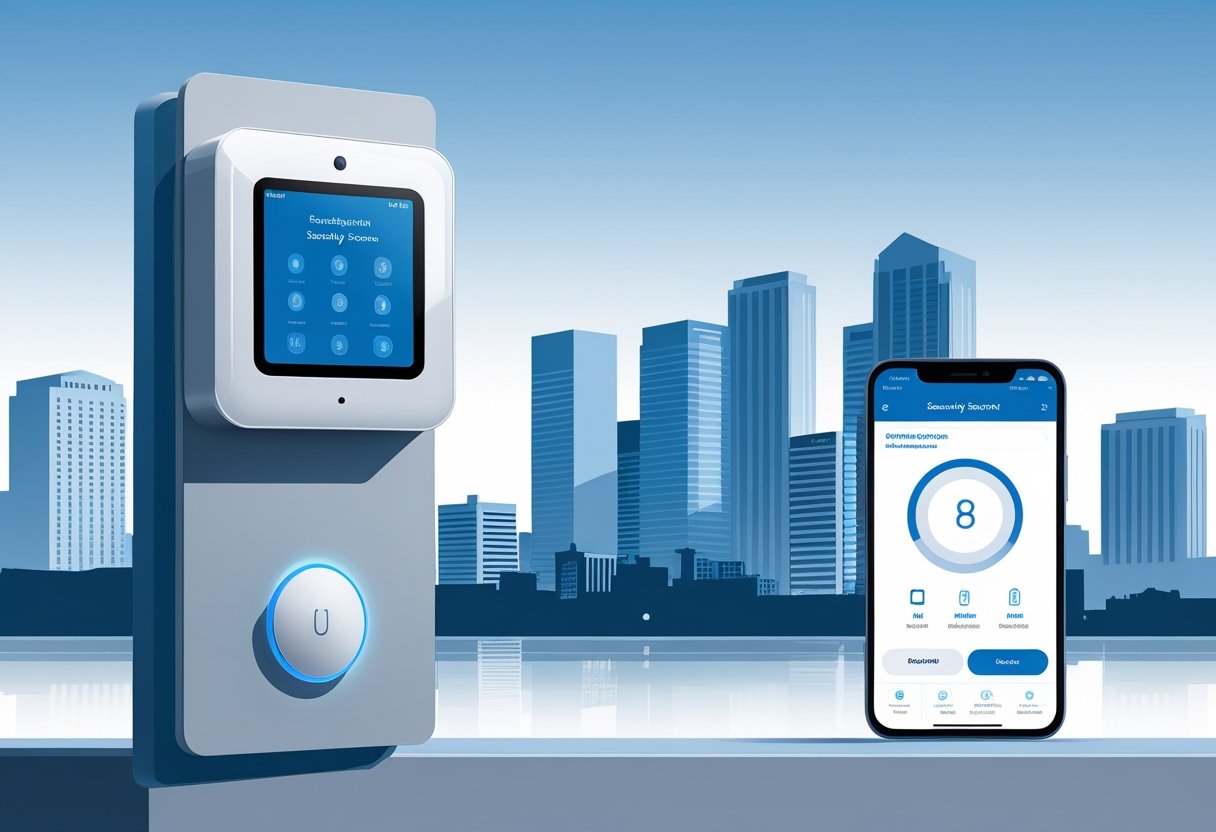In any fire emergency, the fire alarm system control panel acts as the brain of your safety network, managing signals from smoke detectors, heat sensors, and manual pull stations. For residents and businesses in the greater Houston area, understanding the functions of this critical component can be the difference between life and death during a fire event.
The control panel continuously monitors inputs from various devices, ensuring timely alarm activation to alert occupants and initiate emergency response protocols. With advanced features, such as wireless detection and enhanced communication, modern fire alarm systems not only improve safety but also streamline evacuation processes, allowing you to respond quickly and effectively in emergencies.
Investing in a reliable fire alarm system that includes a robust control panel is essential for protecting your property and ensuring the safety of everyone inside. By familiarizing yourself with how this system operates, you empower yourself to make informed decisions about fire safety in your home or business.
Understanding the Fire Alarm System Control Panel
The fire alarm system control panel is a vital component for ensuring safety in buildings. It serves as the central unit that coordinates all alarms, checks system functionality, and facilitates communication between different devices.
Definition and Core Functions
The fire alarm control panel (FACP) is often referred to as the "brain" of the fire alarm system. Its primary role includes monitoring inputs from detectors, such as smoke and heat sensors, and managing outputs to alert devices like sirens and strobe lights.
The panel also logs information for maintaining records, assisting in system diagnostics. It can interface with additional components, including manual pull stations, enhancing the system's overall effectiveness. Thus, the FACP’s capabilities are critical for effective fire safety management.
Role Within the Fire Alarm System
In context, the fire alarm control unit (FACU) plays a crucial role in maintaining safe environments. It communicates with various system components to ensure seamless operation.
Your fire alarm system is only as effective as its control panel. When detectors sense smoke or heat, the panel processes these signals and triggers the appropriate alarms. It also communicates with emergency services, ensuring rapid response in case of an event.
This integration and communication streamline responses to emergencies, making the FACP an essential part of your fire safety plan.
Fire Detection and Alarm Activation
When it comes to fire detection, your fire alarm control panel operates through a network of input devices. These may include smoke detectors, heat detectors, and manual pull stations.
Upon receiving input, the panel processes the data to determine if a fire condition exists. If so, it activates alarms, initiates notification signals, and may control suppression systems if integrated with your fire alarm system.
This immediate activation ensures occupants are alerted promptly, giving everyone more time to evacuate safely. The speed and accuracy of this process underscore the panel's significance in fire safety.
Key Components of a Fire Alarm System Control Panel
Understanding the core components of a fire alarm system control panel is essential for ensuring safety and functionality. These components include the control circuitry, power supply systems, zones, and input/output mechanisms, all working together to provide effective fire detection and response.
Control Circuitry
The control circuitry serves as the brain of the fire alarm system. It processes signals from various detection devices like smoke and heat detectors. This circuitry interprets the information gathered and determines the appropriate actions, such as activating alarms or notifying emergency services.
Control circuits also manage the signals sent to input/output modules, ensuring seamless communication between detection, notification devices, and the control panel. Efficient circuitry is vital for timely responses in emergencies, enabling occupants to evacuate safely.
Power Supply and Backup Systems
A reliable power supply is crucial for the effective operation of a fire alarm system. The primary power supply typically connects to the building's electrical system, providing consistent energy to the control panel and other components.
Backup systems play a critical role in ensuring functionality during power outages. These can include batteries or secondary power sources, which automatically engage if the main supply fails. Maintaining these systems is vital for uninterrupted operation and compliance with safety regulations.
Zones and Circuits
Fire alarm systems are often divided into zones, allowing for precise detection and pinpointing of alarm signals. Each zone can correspond to a specific area in a building, making it easier to identify locations of potential fire hazards quickly.
Circuits are established within these zones, connecting various fire detection devices such as smoke detectors, heat detectors, and manual pull stations. This layout enhances the system's overall efficiency, ensuring effective monitoring and response. Proper zone management is essential for comprehensive safety in your building.
Inputs and Outputs
Input/output (I/O) modules are fundamental components that facilitate communication between the control panel and external devices. Inputs are received from various sensors—like flame detectors and alarm triggers—while outputs may include signals to warning lights or external notification systems.
You must ensure that these I/O modules are properly configured to react appropriately to different signals. Having well-integrated input and output systems allows for an efficient and quick response during emergencies, ultimately enhancing occupant safety and facilitating effective fire safety protocol compliance.
User Interface and Interaction
The user interface of a fire alarm system control panel plays a crucial role in facilitating interaction between users and the system. A well-designed interface ensures effective monitoring and management of fire safety.
Annunciator Panel Overview
An annunciator panel serves as a visual alert system within the fire alarm framework. It displays critical information regarding the status of alarms and system health through lights and indicators. This panel can show alarm conditions, supervisory conditions, and trouble signals, helping you quickly identify issues.
Typically located in accessible areas, the annunciator is crucial for operators and emergency responders. In larger buildings, multiple panels may be employed, providing a comprehensive view of the system status across various zones.
Keypad and Touchscreen Interfaces
The keypad and touchscreen interfaces provide you with direct control of the fire alarm system. Keypads offer tactile feedback with buttons for navigating menus and activating functions. You typically find these in simple systems where quick access is essential.
Touchscreens present a modern alternative, utilizing graphical representations to enhance user experience. This interface allows you to interact more intuitively with the system, making it easier to navigate through settings and alerts. You can access vital information and adjust settings with just a few taps, improving efficiency during emergencies.
Communication Interface and Integration
The communication interface is vital for connecting the fire alarm control panel to other building management systems. This interface allows for real-time data exchange, enhancing functionality and responsiveness.
You can integrate the fire alarm system with HVAC, lighting, and security systems, creating a comprehensive safety network. This integration enables automatic responses to fire events, such as shutting down ventilation to prevent smoke spread.
Utilizing protocols like RS-232, your system can communicate status updates efficiently, enabling you to manage alarms and notifications seamlessly.
Types of Fire Alarm System Control Panels
Fire alarm system control panels come in various types, each designed to meet specific needs. Understanding these types will help you choose the right panel for your safety requirements.
Conventional Panels
Conventional panels are commonly used in smaller buildings. They connect multiple detection devices to a single zone. When an alarm is triggered, it indicates which zone, but not the exact location of the fire.
This type of panel is straightforward to install and maintain. They are suited for less complex buildings with few fire protection requirements. Features may include basic alarm sounds and manual activation options.
While they offer reliability, be aware that conventional panels have limitations in larger structures. They can become cumbersome as they rely heavily on zone identification rather than specific device locations.
Addressable Panels
Addressable panels provide advanced features compared to conventional systems. Each device in the fire alarm system has a unique address, allowing the control panel to identify the exact location of an alarm.
These panels are particularly useful for larger buildings or those with diverse safety needs. They can manage more devices while providing detailed diagnostic information.
With the ability to offer real-time data, you receive faster response times to alarms. Some models also integrate with other safety systems, enhancing overall security.
Coded and Multiplex Panels
Coded panels, often used in larger and more complex settings, can send specific codes to alarm systems. This feature allows for different types of responses, such as varying alert levels based on the situation.
Multiplex panels take this further by allowing multiple alarms and zones to communicate efficiently. They provide a centralized control point for extensive fire protection systems.
These systems are ideal for multi-building campuses or high-rise structures. They help you manage large amounts of data from various sensors seamlessly. Speed and performance are key benefits, streamlining the response process in emergencies.
Alarm Notification and Response Mechanisms
Effective alarm notification and response mechanisms are crucial in enhancing safety during fire emergencies. These elements ensure that occupants are promptly alerted and can take necessary actions to evacuate or respond appropriately.
Audible and Visual Alarms
Audible alarms are designed to capture attention quickly through loud sounds, such as horns or sirens. These devices significantly reduce the risk of occupants overlooking alerts. Visual alarms, like flashing lights, serve as an essential backup, particularly for individuals with hearing impairments.
By integrating both types of alarms, you create a comprehensive notification system. For example, a combination of a high-decibel horn alongside a strobe light will maximize the probability that everyone in the vicinity is aware of the emergency, regardless of their ability to hear.
Notification Appliances
Notification appliances are critical components of a fire alarm system. These include both audible and visual devices that alert occupants when a fire is detected. Common examples are sirens, bells, and strobe lights. Each appliance plays a role in ensuring that alerts are noticeable and effective.
When designing your system, consider the building code and fire safety regulations in your area to determine which appliances are needed. In Houston, specific guidelines may dictate the types of alarms required in various environments. Properly installed notification appliances significantly decrease response times, aiding in safe evacuation.
Alarm Signals and System Communication
Alarm signals are integral for how the control panel communicates with notification appliances. These signals ensure that alarms are activated in real time when a fire event is detected.
For instance, when fire detectors sense smoke or heat, they send signals to the fire alarm control panel. In turn, this panel triggers the designated audible and visual alarms, ensuring swift communication.
Understanding this communication pathway helps you appreciate how quickly your system can respond. Regularly testing and maintaining your fire alarm system will ensure that these signals function correctly, providing you with peace of mind in knowing your safety mechanisms are operational.
System Maintenance and Safety Integration
Effective maintenance and integration of fire alarm system control panels with other safety systems are crucial for optimizing building safety. Regular practices ensure that the fire alarm functions reliably, while integration with suppression systems enhances response capabilities.
Maintenance Practices and Testing
Regular maintenance of your fire alarm control panel is essential. Schedule monthly checks to verify that alarms, detectors, and panels function properly. Ensure all components are free from dust and obstructions.
Conduct annual testing by a certified professional to verify system efficacy. This testing should include functional tests that simulate fire conditions. Document all tests and maintenance activities for compliance and safety audits.
Adhere strictly to local regulations and standards, such as those set by the NFPA. Regular maintenance and testing can prevent malfunctions that endanger lives and properties.
Integration with Fire Suppression and Sprinkler Systems
Integrating your fire alarm system with fire suppression and sprinkler systems is vital for enhanced safety. This integration allows for coordinated responses during emergencies.
Ensure that the fire alarm control panel communicates effectively with your sprinkler systems. When the alarm activates, the sprinklers should deploy immediately in the affected areas, limiting the spread of fire.
Additionally, consider integrating with other systems, such as HVAC controls, to enhance smoke management. Coordinated systems not only protect occupants but also facilitate quicker emergency responses.
Enhancing Building Safety
You play a key role in enhancing building safety through maintenance and integration of fire systems. Regular inspections of control panels and interlinked systems are critical for optimal performance.
Train all building staff on operation procedures and emergency protocols. Familiarity ensures efficient responses during an emergency, reducing response time and improving occupant safety.
Implementing a comprehensive maintenance schedule that includes checks on fire alarms, suppression systems, and sprinklers will create a robust safety environment. A proactive approach minimizes risks and ensures the safety of your building and its occupants.
Frequently Asked Questions
This section addresses common inquiries regarding fire alarm control panels, including types, access to manuals, wiring diagrams, and operational details. Understanding these aspects can enhance your knowledge and effective use of fire alarm systems.
What are the different types of fire alarm control panels available?
Fire alarm control panels generally fall into three main types: conventional, addressable, and intelligent panels.
- Conventional panels work by dividing the building into zones for smoke detection and alarm purposes.
- Addressable panels allow for individual device identification, improving response times.
- Intelligent panels utilize advanced algorithms to assess alarm conditions more accurately.
What is the typical wiring diagram for a fire alarm control panel?
A typical wiring diagram for a fire alarm control panel illustrates connections between the control panel, detection devices, and notification appliances. It includes elements such as power supply connections, initiating devices (like smoke detectors), and notification devices (like alarms).
Consult the specific manual for your model as wiring may vary.
Can you provide a basic overview of how a fire alarm control panel functions?
A fire alarm control panel serves as the system's command center. When a connected device detects smoke or heat, it sends a signal to the panel.
The panel processes this information and activates alarms, notifying occupants and possibly contacting emergency services. It also logs events for future analysis.
What are the recognized brands that manufacture fire alarm panels?
Several well-regarded brands manufacture fire alarm panels, including Alarm Masters. These brands are known for their reliability, innovation, and compliance with industry standards. They provide a range of products suitable for various applications.
How do you configure a fire alarm system using its control panel?
To configure a fire alarm system, access the control panel interface, usually via a keypad or touchscreen.
You can set up zones, assign devices, and adjust sensitivity settings according to your requirements. Always refer to the manual specific to your control panel model for detailed programming steps.
.svg)



.svg)


.svg)



